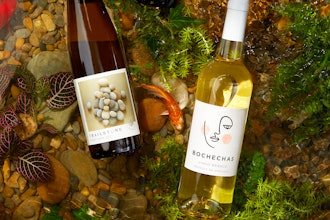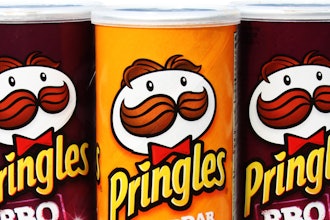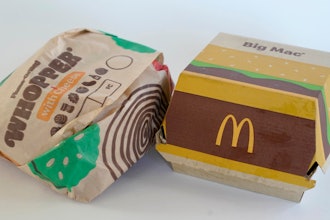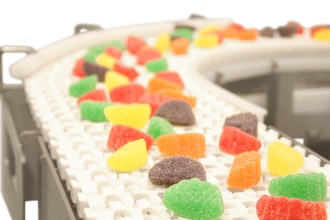
All signs point to the nationwide consumer fraud class action train continuing to gain steam, but the path might not be as unpredictable as before.
Over the past two years, food products have skyrocketed to the top of plaintiffs’ target list for nationwide consumer fraud class actions. Consumers claim that they wouldn’t have purchased a certain food item if it weren’t for allegedly misleading language on the product’s label. In some jurisdictions, consumers can have up to six years (like New Jersey) or four years (like California) to sue. So the spike in food labeling class actions has product manufacturers continuously waiting to find out if their company is the latest number chosen in this litigation lottery.
Food companies’ attorneys have opposed these claims at both the motion to dismiss and motion for class certification stages. However, until recently, food counsel had been left without much of a compass to do so. Not many cases had reached decision phase on dismissal or class certification issues, leaving companies without reported opinions to guide defense efforts.
But over time, we have finally begun to see more courts issuing written opinions in food class actions, including:
- Dismissal of cases or denial of class certification because the named class action plaintiffs are not entitled to sue for products they themselves did not purchase (i.e., plaintiffs “lack standing”).
- Dismissal of cases because food packages fully disclose the ingredient list.
Let’s take a look at each of these developments individually.
(1) Can the class representative sue for products he didn’t buy?
Similarity usually gives standing: Courts are divided as to whether the named plaintiff in a proposed class action has standing to maintain claims for products he did not purchase. The general rule is that a putative class representative may assert claims not only for products he bought but also for food items he did not, provided the latter are “nearly identical,” “sufficiently similar” or “substantially similar” to the purchased product. For example, one court found that the plaintiff had standing to sue for “All Natural” labels on differently flavored nutrition bars that contained ingredients such as ascorbic acid and calcium phosphates, even as to bar flavors that the plaintiff did not purchase. According to the court: “There is more than enough similarity between the Chocolate Peanut Butter Bars allegedly purchased and the other nineteen varieties of nutrition bars identified in the Complaint.” Colucci v. ZonePerfect Nutrition Co., No. 12-2907, N.D. Cal., December 28, 2012.
Recent wins for food companies: This summer, a few jurisdictions have scaled back some of their pro-plaintiff stance on standing. For example, where (1) a manufacturer’s products within a certain food line share the same label (e.g., juices labeled “No Sugar Added” or “Free From Artificial Colors”) and (2) a plaintiff did not purchase one or more products falling within the class definition, manufacturers in some jurisdictions could oppose class certification where the nutrition claims on each product are unique among the individual items, such as blueberry versus pomegranate flavors. (Major v. Ocean Spray Cranberries Inc., No. 12-03067, N.D. Cal., June 10, 2013.)
How to oppose plaintiff’s standing:
(a) Show label differences: In moving to dismiss for a plaintiff’s lack of standing, manufacturers should demonstrate to courts why and how the labels on non-purchased products are not “substantially similar” to purchased products. For example, one court decided that a plaintiff had standing for both purchased and non-purchased green teas that all had “Healthy antioxidant” labels, which the court ruled “appear to be identical.” But that plaintiff lacked standing as to non-purchased black teas that had a label stating: “Delivers healthful antioxidants.” (Khasin v. R.C. Bigelow, Inc., No. 12-02204, N.D. Cal., May 2013.)
(b) Show product differences: Manufacturers asking courts to dismiss a complaint or deny class certification based on a consumer’s lack of standing should distinguish for judges the ways in which not only the labels but also the purchased and non-purchased products themselves lack “sufficient similarity,” thereby eliminating standing for non-purchased food items. For example, having purchased three green teas made from the camellia plant, a consumer had standing for 51 varieties of defendant’s camellia-derived teas where her claims were “based upon the exact same label describing the exact same product.” But that consumer lacked standing to sue for red teas made from the rooibos plant that were not “sufficiently identical” to the green teas she bought. (Lanovaz v. Twinings North America, Inc., No. 12-02646, N.D. Cal., May 2013.)
Courts’ decisions on standing aren’t rosy for all food manufacturers:
(a) While trends involving non-purchased products are emerging, it’s still too early to find consistency.
Even where courts dismiss claims when plaintiffs fail to allege enough facts to show sufficient similarity between purchased and non-purchased food, courts routinely allow consumers to amend their complaint, thereby letting plaintiffs revive claims for non-purchased products. For example, a plaintiff who purchased six flavors of sugar-sweetened yogurt with “evaporated cane juice” on labels was permitted to amend her complaint if she could provide a list specifically setting forth: (1) which yogurt products were at issue, including specific flavors; (2) which and where representations appeared on each product; and (3) which representations were false or misleading with respect to each product. (Kane v. Chobani, Inc., No. 12–CV–02425–LHK, N.D. Cal., July 12, 2013.)
(b) Some courts are making food defendants wait out resolution on standing.
In some jurisdictions, courts postpone decision about standing for non-purchased products until the class certification stage, not the motion to dismiss phase. This is what happened in Aguilar v. Boulder Brands Inc., No. 12-01862, S.D. Cal., June 10, 2013. The consumer there claimed that a butter spread’s “Helps Block Cholesterol” label was misleading because the manufacturer’s addition of only 0.1 grams of plant sterols was allegedly insufficient to achieve cholesterol-blocking benefit. Plaintiff sued over one purchased product and two other non-purchased products, all with the same alleged label misrepresentation. Refusing to dismiss the case at that point, the court said standing was instead a class certification issue of whether plaintiff’s claims were “typical” of all class members.
(c) “Similarity” between purchased and non-purchased products may not be the only criterion for standing.
Courts could develop other standards besides “similarity” in order to give plaintiffs standing to sue for food they never bought. For example, if a consumer bases his claims on the “impact of an overall advertising campaign” involving purchased and non-purchased products, a court could afford standing. This recently happened in California federal court (Aguilar v. Boulder Brand).
(2) Why don’t labels’ ingredient lists moot these cases?
The general rule: ingredient lists aren’t automatic passes out of litigation
Where courts have determined that labels on the front of food packages are misleading or deceptive, ingredient lists and the literal truth elsewhere on the package usually do not provide absolute defenses to consumer protection claims. For example, in Williams v. Gerber Products Co., 552 F.3d 934 (9th Cir. 2009), a consumer sued over a toddler fruit juice called “Fruit Juice Snacks” on a package picturing a number of different fruits. The only juice in the product allegedly was white grape juice and the two primary ingredients were corn syrup and sugar. The package said the product was made with “fruit juice and other all natural ingredients.” The court found this language misleading: “[W]e do not think that the FDA requires an ingredient list so that manufacturers can mislead consumers and then rely on the ingredient list to correct those misinterpretations . . . Instead, reasonable consumers expect that the ingredient list contains more detailed information about the product that confirms other representations on the packaging.”
When developing their labels and advertising, food manufacturers should remember that most courts examine these statutory consumer protection claims from the perspective of “a reasonable consumer [who] might make certain assumptions” based on labels’ language, such as “‘made with real fruit’ [and] ‘fruit flavored snack.’” (Lam v. General Mills, Inc., No. 11-5056, N.D. Cal., May 10, 2012.)
Ingredient lists might be a defense, depending on the facts or plaintiff’s cause of action
Still, at least one recent opinion has allowed a truthful ingredient list to be a defense to a consumer’s labeling claim. In Chin v. General Mills, Inc. (No. 12-02150, D. Minn., June 2013), the plaintiff alleged that defendant’s Nature Valley products were deceptively labeled as “100% natural” since they contain processed sugar substitutes. The court granted General Mills’ motion to dismiss by stating: “General Mills cannot be in breach of an express warranty by including an ingredient that it expressly informed consumers was included.” Plaintiffs’ attorneys in other cases will likely argue that Chin is limited not only to its unique facts but also to express warranty claims. This would leave available for consumer protection claims the usual rule that ingredient lists are not complete defenses.
Where Do We Go From Here?
The class actions that have spiked over the past two years are now working their way through litigation, so food companies may finally begin to see some clarity in court rulings — although not always favorable outcomes. Much-anticipated court opinions can serve as guideposts for food manufacturers and their counsel as they not only evaluate possible exposure from existing product labels but also develop future advertising. With no signs that this class action trend will slow any time soon, food manufacturers should consult with counsel knowledgeable about class action decisions on these topics in jurisdictions where their products are sold.
Kristen E. Polovoy is of counsel to Montgomery, McCracken, Walker & Rhoads, LLP in Cherry Hill, NJ. She is a member of the New Jersey State Bar Association’s Class Actions Committee and serves as Chairperson of the Camden County Bar Association’s Class Action Committee. Her practice concentrates on class action defense.























